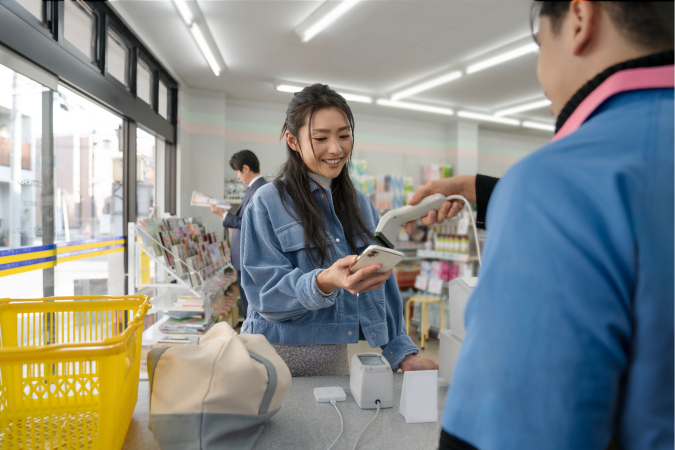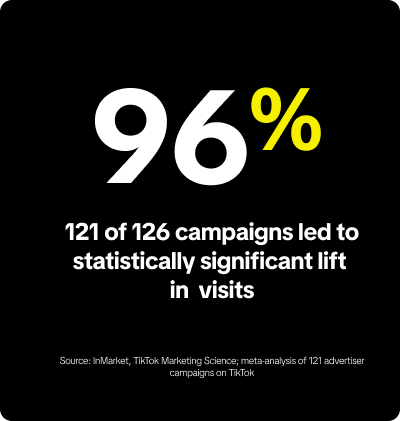Measure the impact of TikTok campaigns on your store visits via InMarket
InMarket and TikTok team up to deliver store visits and sales lift measurement solutions.

Advertisers on TikTok with physical storefronts are keen to measure how their campaigns are driving customers into their stores, and what they are purchasing once they are there. This is especially true in brick-and-mortar industries such as retail, QSR, and dining.
To measure the full-funnel customer journey from impressions to in-store visits to subsequent sales, TikTok has teamed up with InMarket, a location data intelligence company offering programmatic, audience, data, and measurement solutions surrounding foot traffic.
InMarket's measurement solution is called Lift Conversion Index® (LCI). Powered by robust consumer visit and sales data, LCI provides an accurate and holistic view into how your media drives incremental consumer visits and sales.
LCI is a people-based attribution solution that measures the true impact of advertising on consumer behaviors, real-world visits, and sales. At the core of LCI is its methodological rigor.
A store visit conversion is noted when a user visits a physical store after being exposed to a TikTok ad. This allows advertisers to understand if their specific campaign is leading to incremental visitations post exposure by comparing visitation rates of an exposed group to a group of similar control users.
To complete the full-funnel journey, InMarket offers a sales lift attribution add-on called Retail Sales Lift Attribution (RSA). InMarket cooperates with its sales data partner to perform sales lift attribution, which reports on a suite of sales attribution metrics. The solution uses purchase date and credit and debit card transactions from a subset of the same exposed/control users included in the foot traffic analysis (mentioned above) to determine incremental sales lift post ad exposure.

"TikTok is an incredibly powerful platform for brands looking to engage with a global audience through innovative and creative advertising campaigns. Through InMarket’s LCI, advertisers on TikTok can maximize the effectiveness of their campaigns and drive tangible business results."
Campaign Impact: TikTok drives store visits and sales lift
From the advertisers that have measured their campaigns with InMarket, we've already started to see tremendous results. Out of 126 campaigns, 121 campaigns led to statistically significant lift within the retail and dining categories. For those campaigns measured, TikTok performance was 1.2x higher than the LCI Incremental Lift benchmark.¹



"At TikTok, we're always looking for new ways to help our advertisers better show the impact of their campaigns. InMarket's LCI provides our advertisers with valuable insights into the effectiveness of their campaigns. It enables businesses to more effectively reach and engage with their target audience on TikTok and drive meaningful results for their business"
TikTok's suite of measurement solutions is geared toward proving the true value of each impression for brands. Our team of measurement and digital marketing experts are here to make sure that you have the solutions you need to measure the KPIs that drive your business.
If you're interested in measuring the incremental visits and sales that TikTok drives to your business, please reach out to your TikTok account team to get involved!
Source: InMarket, TikTok Marketing Science; meta-analysis of 121 advertiser campaigns on TikTok
